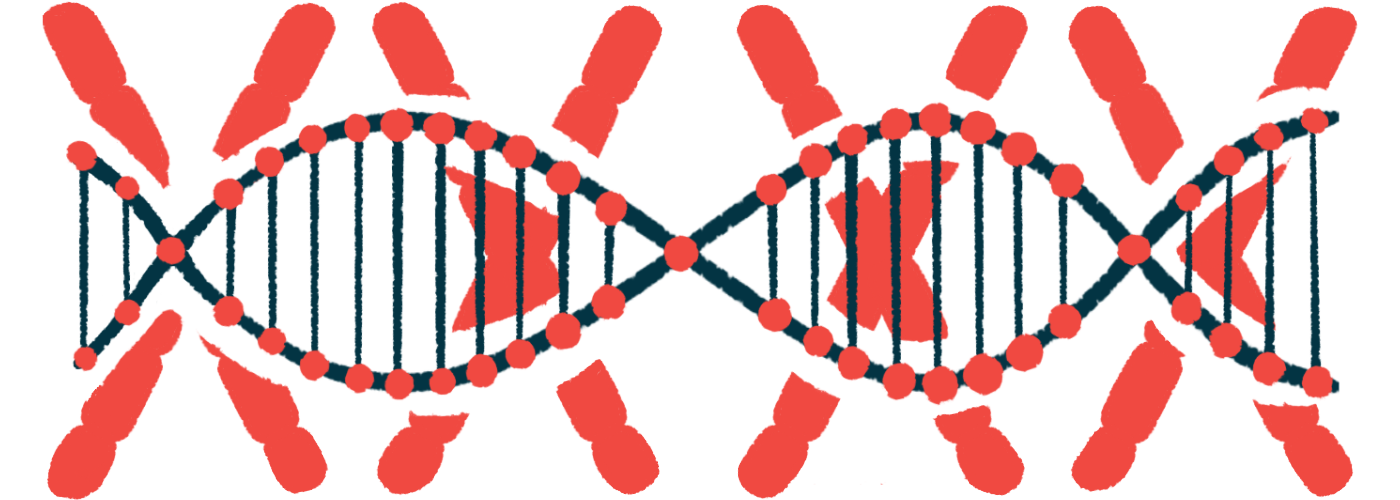Study finds unique DMD disease mechanism, may help in diagnosis
Epigenetic signature also may be biomarker for treatment response

New research into a mechanism underlying Duchenne muscular dystrophy (DMD) — which revealed a chemical modification in gene activity — has shed light on potential treatments for the muscle-wasting disease, and may aid in diagnosis, according to scientists.
DMD, the study showed, is characterized by a specific pattern of methylation, a type of chemical alteration in the DNA that changes how genes are read.
These results provide an “insight into potential molecular mechanisms underlying the phenotypic [disease features] variability observed among DMD patients, thereby generating new avenues for exploring pharmacological interventions and measuring response to therapies,” the researchers wrote.
The study, “The discovery of the DNA methylation episignature for Duchenne muscular dystrophy,” was published in the journal Neuromuscular Disorders.
Investigating a novel disease mechanism in DMD
A muscle-wasting disease, DMD is caused by mutations in the gene that provides instructions for making a protein called dystrophin. This protein acts like a shock absorber in muscle cells, helping protect them from damage during muscle contractions.
In DMD, mutations result in no or virtually no functional dystrophin protein being produced. As a result, patients experience symptoms such as progressive muscle weakness and wasting.
However, prior research reported substantial differences in clinical presentation among patients with the same mutation who are on the identical standard treatment, suggesting that factors other than the lack of dystrophin may be involved in DMD.
One biological process implicated in the origin and development of several diseases is epigenetics, which refers to chemical modifications of gene activity but not of DNA itself.
DNA methylation is an epigenetic modification in which so-called methyl groups are added to DNA to suppress gene activity. So-called episignatures, or methylation patterns, have been proposed as serving as a bridge between a person’s genetic profile and disease presentation, the scientists noted.
To show how DNA methylation profiling can be useful in diagnosis, a team of researchers in Canada now assessed DNA methylation patterns that are unique to DMD.
DNA samples were taken from the blood of 36 Duchenne male patients and 72 people without the disease, who served as controls. The patients had a mean age of 14.7; the controls were matched for age and sex.
Most of the individuals with DMD were wheelchair-dependent and being treated with corticosteroids, an anti-inflammatory medication, primarily Emflaza (deflazacort).
DNA methylation patterns of five patients were excluded as they showed higher similarity with the control group than with the rest of the DMD group.
Using a combination of two methylation screening tools, a total of 158 DNA sequences were found to be less methylated in DMD patients when compared with controls. Selected sequences had a methylation difference of at least 5% between the groups.
Corticosteroids are known to modulate the epigenetic landscape of target genes in muscular dystrophy. To clarify whether the identified episignature was related to DMD itself and not to chronic exposure to corticosteroids, the researchers analyzed the methylation patterns of three controls who were taking this medication to treat other conditions.
Samples from the DMD patients were “consistently and reliably differentiated” from those of the controls treated with corticosteroids, the team found.
That showed “that the episignature reported in this study is, in fact, representative of pathophysiological [disease-related] changes associated with DMD, rather than the effects of glucocorticoid [corticosteroid] exposure,” they wrote.
“There is potential for the DMD episignature to be used as a biomarker for disease severity and treatment responsiveness,” the researchers added.
According to the team, this episignature may be a “more financially and technologically accessible” option.
There is potential for the DMD episignature to be used as a biomarker for disease severity and treatment responsiveness.
However, further studies with larger sample sizes and a more diverse group of patients in terms of disease features are “necessary to elucidate whether this episignature holds biomarker potential,” they noted.
Particularly important would be additional studies that would allow stratification of the identified DMD episignature into so-called sub-signatures. This would help predict patients’ prognosis, “giving rise to more personalized treatment approaches and enhanced quality of life,” the researchers wrote.
Such strategies would be beneficial “for patients and caregivers, alike,” the team added.






